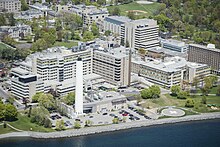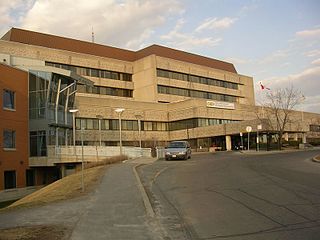
CHEO, formerly the Children's Hospital of Eastern Ontario, is a globally renowned pediatric health-care institution located in Ottawa, Ontario, Canada. CHEO is also a tertiary trauma centre for children and youth in eastern Ontario, Nunavut, northern Ontario and the Outaouais region of Quebec and one of only seven Level I trauma centres for children in Canada.
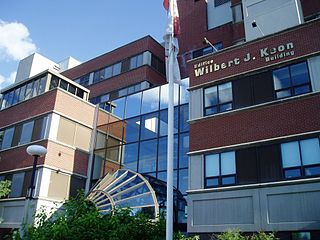
The University of Ottawa Heart Institute (UOHI) (French: Institut de cardiologie de l'Université d'Ottawa ) is Canada's largest cardiovascular health centre. It is located in Ottawa, Ontario, Canada. It began as a department in The Ottawa Hospital, and since has evolved into Canada's only complete cardiac centre, encompassing prevention, diagnosis, treatment, rehabilitation, research, and education.

The Toronto General Hospital (TGH) is a major teaching hospital in Toronto, Ontario, Canada and the flagship campus of University Health Network (UHN). It is located in the Discovery District of Downtown Toronto along University Avenue's Hospital Row; it is directly north of The Hospital for Sick Children, across Gerrard Street West, and east of Princess Margaret Cancer Centre and Mount Sinai Hospital. The hospital serves as a teaching hospital for the University of Toronto Faculty of Medicine. In 2019, the hospital was ranked first for research in Canada by Research Infosource for the ninth consecutive year.

Toronto Rehabilitation Institute is the largest rehabilitation hospital in Canada. Owned and operated by the University Health Network (UHN), Toronto Rehab provides patients with rehabilitation care, helping people rebuild their lives and achieve individualized goals following injury and disability. It is composed of five sites across Toronto, which are: Bickle Centre, Lakeside Centre, Lyndhurst Centre, Rumsey Centre, and University Centre.
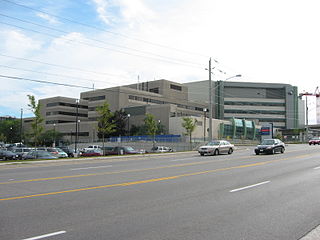
Southlake Regional Health Centre, formerly known as York County Hospital, is a hospital located in Newmarket, Ontario, Canada. Through various expansions during its history, it has grown into a university-affiliated teaching and research facility, specifically offering advanced cardiac, cancer and thoracic care.
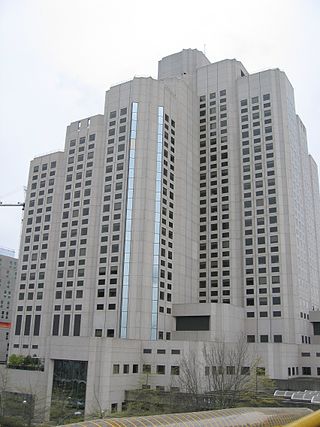
Vancouver General Hospital is a medical facility located in Vancouver, British Columbia. It is the largest facility in the Vancouver Hospital and Health Sciences Centre (VHHSC) group of medical facilities. VGH is Canada's third largest hospital by bed count, after Hamilton General Hospital, and Foothills Medical Centre.
The Niagara Health System, or Niagara Health (NH), is a Canadian multi-site hospital amalgamation, comprising five sites serving over 450,000 residents across the 12 municipalities making up the Regional Municipality of Niagara, Canada. Niagara Health is one of Ontario's largest hospital systems, with 4,800 employees, 600 physicians and 850 volunteers. As of 2019, its annual operating budget was approximately $550 million.

Hotel Dieu Shaver Health and Rehabilitation Centre is Niagara's only specialty rehabilitation hospital, located in the south-end of St. Catharines, Ontario. Its mandate is to provide complex continuing care and rehabilitation services to patients in the city and Niagara Region.
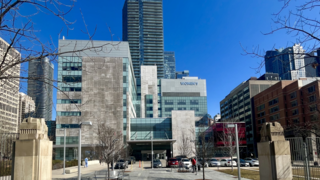
Women's College Hospital is a teaching hospital in Toronto, Ontario, Canada. It is located in downtown Toronto at the north end of Hospital Row, a section of University Avenue where several major hospitals are located. It currently functions as an independent ambulatory care hospital.
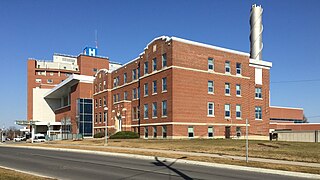
St. Mary's General Hospital is a 197-bed adult acute-care facility in Kitchener, Ontario, Canada serving Waterloo Region and surrounding area. St. Mary’s is the second-largest acute care hospital in the St. Joseph’s Health System. It is the site of the Regional Cardiac Care Centre which opened in 2003, while the emergency department was extensively renovated in 2004. St Mary’s clinical focuses are on cardiac care, respiratory care, outpatient (day) surgery, general medicine, and 24/7 emergency care. Around 2,000 staff, physicians volunteers provide care in these areas of the hospital. Patients who can not be taken care of at St. Mary’s will most likely be transferred to Grand River General Hospital.
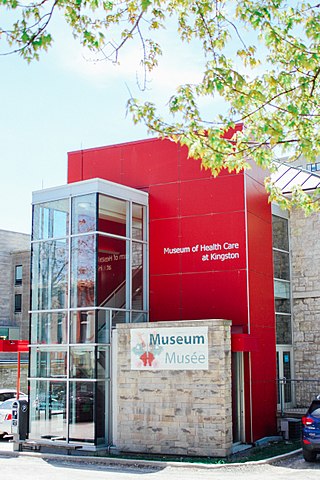
The Museum of Health Care is located in Kingston, Ontario, Canada in the Ann Baillie Building on the Kingston General Hospital site and covers medical history from the 18th century to the modern era. Its research and collection are searchable on-line via their website and online catalogue.

Hotel Dieu Hospital site is a Catholic hospital in Kingston, Ontario, Canada and part of Kingston Health Sciences Centre. It is affiliated with Queen's University, and is a partner site with Kingston General Hospital, delivering health care, conducting research and training the health care professionals.

The Royal Alexandra Hospital (RAH) is a large and long serving hospital in the Canadian province of Alberta. Operated by Alberta Health Services and located north of Edmonton's downtown core, the Royal Alexandra serves a diverse community stretching from Downtown Edmonton to western and northern Canada. The total catchment area for the RAH is equivalent to 1/3 of Canada's land mass, stretching north from Downtown Edmonton to enpass both the Northwest Territories and Yukon territory, and stretching as far west as British Columbia's pacific coast.
Royal Jubilee Hospital is a 500-bed general hospital in Victoria, British Columbia, Canada located about 3 km (1.9 mi) east of the city centre, in the Jubilee neighbourhood.

Mater Health Services North Queensland operates two private hospitals, one established by the Sisters of Mercy in 1945 named Mater Hospital Pimlico and the second purchased in 2007 named the Mater Women's and Children's Hospital Hyde Park.
Providence Care is a teaching hospital affiliated with Queen's University located in Kingston, Ontario that was built in 1861. Providence Care is a not-for-profit organization governed by a volunteer Board of Directors and sponsored by the Catholic Health Corporation of Ontario. The Worship Centre overlooks Lake Ontario and was designed with input from faith leaders from the Kingston, Ontario community. Providence Care has 585 patient beds. Providence Care is a partner within Kingston's University hospitals in the Southeast LHIN, delivering health care, conducting research and training health care professionals.
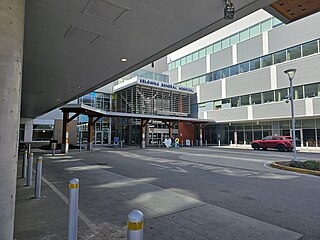
Kelowna General Hospital (KGH) is a tertiary referral hospital located in Kelowna, British Columbia operated by Interior Health that offers medical care in the Central Okanagan. In British Columbia, Kelowna General is the only hospital outside the Lower Mainland or Vancouver Island that performs angioplasty or cardiac surgery.

Royal Columbian Hospital (RCH) is among the oldest hospitals in British Columbia and one of the busiest in the Fraser Health Authority. It is located in New Westminster overlooking the Fraser River and is the only hospital in the Lower Mainland that is immediately adjacent to a Skytrain station (Sapperton).
Roy Fraser Armstrong was a Canadian hospital administrator and engineer who served as the Superintendent of Kingston General Hospital from 1925 to 1957.
The Sudbury General Hospital of the Immaculate Heart of Mary on Paris Street opened in 1950 as the first English speaking hospital in Northern Ontario, Canada. The building can be recognized to have a brick façade with a steel beam grid system posing as the skeleton, upon inspection. Architecturally it is a simple structure and it can be concluded that due to lack of funds and urgency the quickest and cheapest model was designed.



